Jun 7, 2023
Sounds of Inami woodcarving still echo around Yokamachi-dori, Toyama Pref.
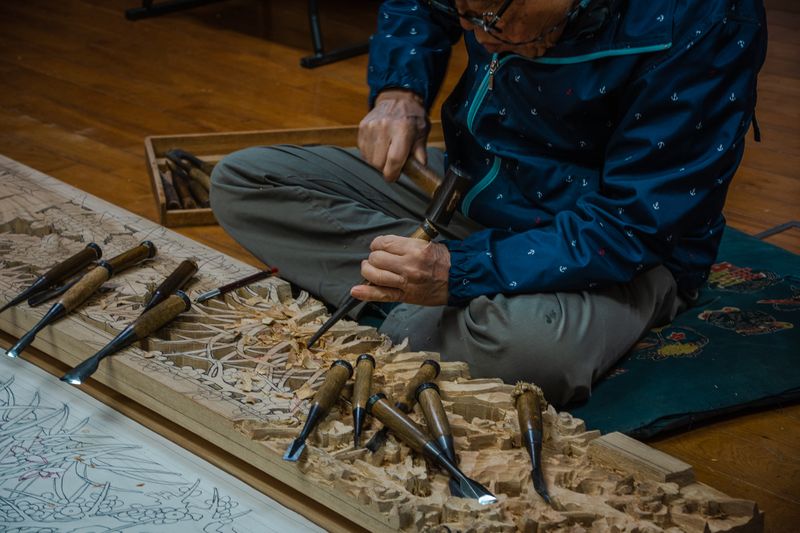
The Inami district of Nanto City in western Toyama Prefecture, central Japan, is the birthplace of Inami woodcarving, or “Inami choukoku.”
Celebrated for its intricacy, some 200 kinds of chisels and knives are taken up by local artisans in the production of Inami woodcarvings. Many of the carvings include transoms, or “ranma,” the decorative panels often seen between the sliding doors and ceiling of traditional Japanese interiors.
The detail in Inami woodcarving appears painstaking - scenes of nature alive with animals, birds and trees, or even magnificent dragons, all bursting out of pieces of camphor, paulownia, or zelkova wood.
In his workshop space along Inami district’s Yokamachi-dori Avenue, local woodcarver Masaji Maekawa sat cross-legged on a cushion in front of a work-in-progress ranma carving. Maekawa sits like this from around 9:30am to 6pm each day working on his carvings, he told us. Just as he has done for his 50 years as a woodcarver.
Of the ranma in front of him, Maekawa said that he hoped to finish it in around one and half months, but couldn’t be sure. He was trying out a new design which makes the process longer.
“I have to take it step-by-step and think carefully about how to carve,” he said.
A sketch of the carving lay stretched out in front of the as yet unfinished ranma, which Maekawa was using as a guide. Such was the apparent detail involved, just contemplating the turning of the sketch into a finished carving was hard for this observer. Where to begin?
Even after 50 years of practice though, Maekawa himself (now 77) said he still finds the process of turning a sketch into a finished carving a challenge, something which he also appeared to find humor in.
“Whatever it is I’m working on now,” Maekawa half joked when asked about what he had found challenging in being an Inami woodcarver over the years.
“It’s a challenge every time. Drawing a new sketch and starting from that is really difficult. Turning the image I have in my mind into a drawing and then being able to create a carving from that. It’s difficult,” he said.
“It’s a lot of fun though.”
The finery and intricacy of Inami woodcarving has so far largely kept it beyond the reach of machines, too. Aside from the punching of a hole here and there, this is a job for the hands of a master of their craft, armed with a hammer and, of course, over 200 chisels and knives. No sandpaper though.
“A machine doesn’t know how to proceed. I’m the one who made the original sketch and sometimes I don't even know how to proceed with the carving,” Maekawa said.
“This is the kind of work which requires you to use your own sensibility.”
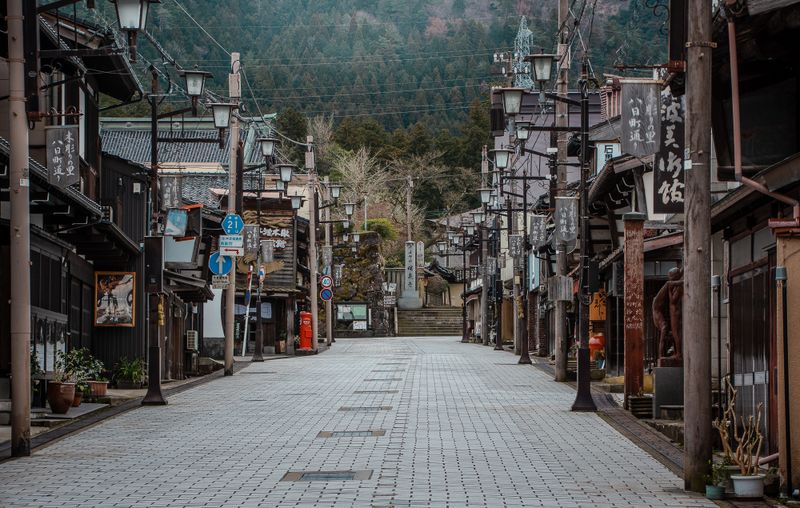
(Yokamachi-dori Avenue, Nanto City. Photo taken March 2023.)
Lined with woodcarving workshops, Yokamachi-dori Avenue moves to the rhythm of chisels being hammered into wood (the sound of which has seen the area listed among the environment ministry’s 100 Soundscapes of Japan).
Strolling the quaint cobble-stone street, it’s fun to spot name plates that adorn the front doors and letter boxes of some buildings, the artistry of which appears to reflect the pursuit of the residents within.
Also among the residents of Yokamachi-dori are cats, the creation of Inami woodcarvers which can be spotted peeking out from behind store-front sign boards or reclined under the eaves of a roof. There are, apparently, 30 of these cats which visitors to the area might enjoy trying to seek out.
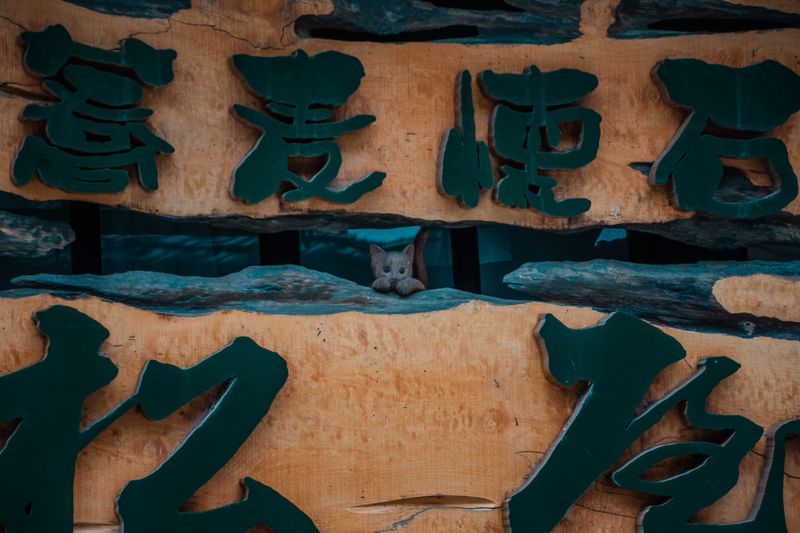
(Yokamachi-dori Avenue, Nanto City. Photo taken March 2023.)
Despite Yokamachi-dori being the production center of Inami woodcarving today, the street itself is not quite the point of its origin. That can be found off the southeastern end of the street in the magnificent form of Inamibetsuin Zuisenji temple, the largest wooden Jodo Shinshu, or “Shin Buddhism,” temple in Japan’s Hokuriku region.
A flier later handed to us detailing tours of the area described Zuisenji as, “essentially the “Cathedral of San Pietro'' of the Hokuriku region.” (Perhaps referring to St. Peter's Basilica in Vatican City?)
“Inami is very famous for woodcarving but we can’t talk about it without this temple,” explained lnami resident and guide Michiko Takaya.
Zuisenji was established in 1390. The temple’s founder, a head of the Jodo Shinshu Hongwanji-ha Buddhist sect, is believed to have chosen its location after a holy spring poured forth from a footprint left by his horse when visiting the area more than 600 years ago, according to Takaya.
Decision made. Temple established.
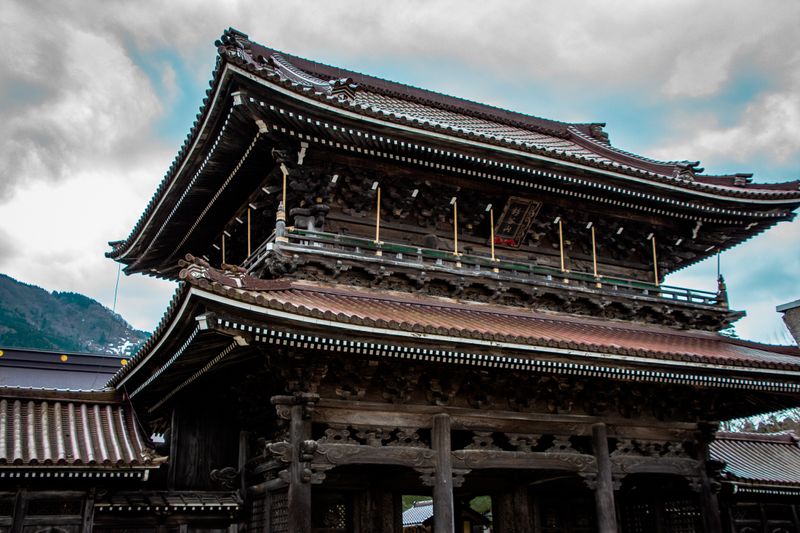
(Inamibetsuin Zuisenji temple, Nanto City. Photo taken March 2023.)
After a fire damaged the temple in the mid-18th century, Sanshiro Maekawa, a celebrated woodcarver of Kyoto’s Hongan-ji Temple was called in to help with reconstruction work.
Takaya pointed out the figure of a dragon on Zuisenji’s main gate. The dragon was carved by Maekawa from a single piece of zelkova, a type of wood often used in shrines and temples in Japan.
“This dragon was carved in the late 18th century. In those days there were no photos or internet, so I wonder how Maekawa was able to imagine this creature,” Takaya said.
When another large fire visited Zuisenji, ultimately damaging the temple’s main hall, as the fire was approaching the gate Maekawa’s dragon is said to have come out from the gate and extinguished the fire in an instant, according to Takaya.
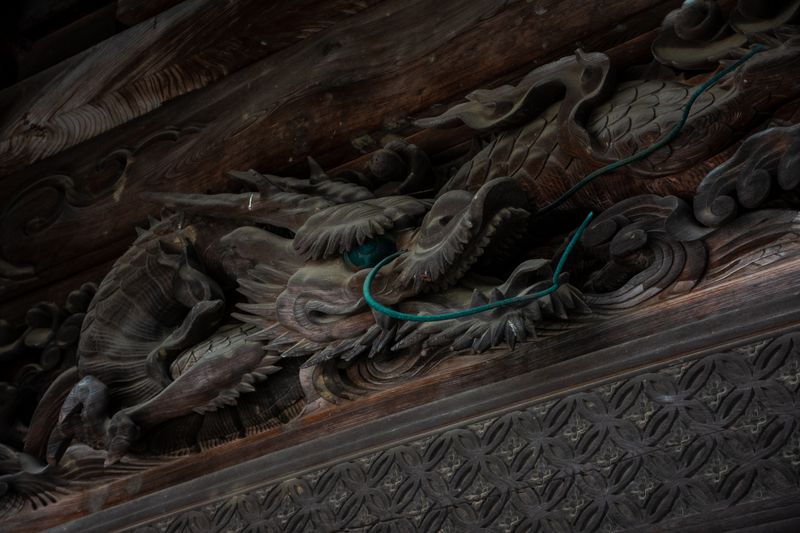
(Inamibetsuin Zuisenji temple, Nanto City. Photo taken March 2023.)
During his time at the temple, Maekawa taught his woodcarving skills to four local carpenters.
The figures of eight hermits carved into the gate are said to be the work of Maekawa’s local apprentices.
This is thought to be the beginning of Inami woodcarving, a craft tradition so demanding of the finest skill it continues to challenge its masters over 250 years later.
Related
Fukui’s old traditions, temples await new arrivals with shinkansen extension
Ainokura’s gassho-zukuri residents share stories of the way things used to be
Kutani ware artists continue tradition of bold designs, bright colors, commitment to quality



0 Comments